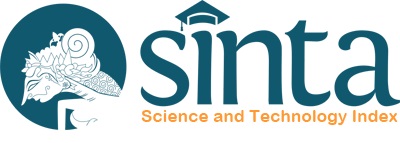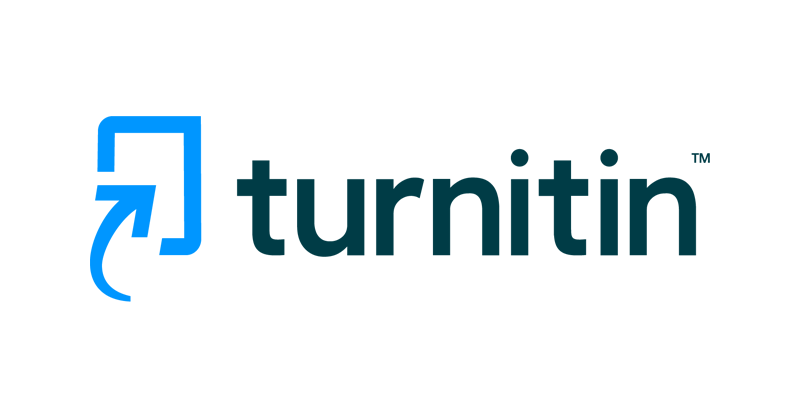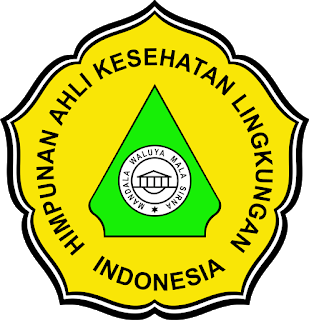Effectiveness of Biocoagulants in Reducing Water Pollution: ASystematic Literature Review
DOI:
https://doi.org/10.32382/sulo.v25i2.1284Keywords:
Biocoagulant, Water treatment, Turbidity, Organic Pollutants, Heavy MetalsAbstract
Water pollution is a critical environmental challenge globally, particularly in Indonesia, which poses a significant threat to public health and natural ecosystems. To address this pressing issue, the application of efficient and environmentally friendly water treatment methods is essential; one promising approach is the utilization of biocoagulants as an alternative to chemical coagulants. This study aims to assess the effectiveness of biocoagulants in reducing water pollution in the form of turbidity, organic pollutants, and heavy metals in water. The research method used is a systematic literature review using a PRISMA diagram starting from secondary data collection, data presentation, and data processing from databases such as Google Scholar, Scopus, and Pubmed. Several studies showlants such as Moringa oleifera seeds, chitosan, and Opuntia ficus-indica have been proven effective in reducing water turbidity, organic pollutants, and heavy metals. Nonetheless, the application of biocoagulants still faces several challenges, such as variability in effectiveness depending on water type and local conditions and the need for more efficient production. Further research is needed to optimize the use of biocoagulants in large-scale water treatment. With the development of technology, biocoagulants have the potential to be a safer and environmentally friendly sustainable solution in water management, which is in line with global sustainability goals (SDGs 6).
References
Abd Askar, A.S. and Dakhil, A.S.D.S. (2023) ‘Efficiency of Moringa Oleifera Seeds as Natural Alternative to The Chemical Coagulants in Drinking Water Treatment Process’, Journal of Wildlife and Biodiversity, 7(Special Issue), pp. 196–216.
Adeoye, M.A. et al. (2023) ‘Organizational Behavior and Its Impact on Teacher Burnout in Public Secondary Schools’, Jpi (Jurnal Pendidikan Indonesia), 12(3), pp. 511–518. Available at: https://doi.org/10.23887/jpiundiksha.v12i3.66845.
Adjeroud-Abdellatif, N. et al. (2022) ‘Effect of a natural coagulant extract from Opuntia ficus-indica cladode on electrocoagulation-electroflotation water treatment process’, International Journal of Environmental Analytical Chemistry, 102(17), pp. 5822–5846. Available at: https://doi.org/10.1080/03067319.2020.1804889.
Afiatun, E., Wahyuni, S. and Hamdan, F. (2018) ‘Perbandingan Komposisi Koagulan Biji Kelor (Moringanoleifera), Biji Asam Jawa (Tamarindusindica L) Dan Aluminium Sulfat (Al2 (So4) 3) Untuk Menurunkan Kekeruhan Air Sungai Citarum Atas Ciparay Kabupaten Bandung’, Journal of Community Based Environmental Engineering and Management, 2(1), pp. 21–30.
Akuboh, D.O. et al. (2022) ‘Assessing the Potentials of a Plant-Based Coagulant (Cyperus Esculentus Pulp) As Alternative To Alum in Conventional Water Treatment Process’, Arid Zone Journal of Engineering, Technology and Environment, 18(3), pp. 387–402. Available at: www.azojete.com.ng.
Askar, A.S.A. and Dakhil, A.S. (2023) ‘Efficiency of Moringa oleifera seeds as a natural alternative to the chemical coagulants in the drinking water treatment process’, Journal of Wildlife and Biodiversity, 7(Special Issue), pp. 196–216. Available at: https://doi.org/10.5281/zenodo.10212120.
Benalia, A. et al. (2022) ‘The use of aloe vera as natural coagulant in algerian drinking water treatment plant’, Journal of Renewable Materials, 10(3), pp. 625–637. Available at: https://doi.org/10.32604/jrm.2022.017848.
BPS (2023) ‘StatistikIndonesia’, Bps, 1101001, p. 790. Available at: https://www.bps.go.id/publication/2020/04/29/e9011b3155d45d70823c141f/statistik-indonesia-2020.html.
Choudhary, B., Choudhary, Y. and Palan, S. (2024) ‘Study on Treated Fly Ash and Cladodes of Opuntia ficus indica as Low-Cost Dye Adsorbents’, Ecology, Environment and Conservation, 30(suppl), pp. 285–287. Available at: https://doi.org/10.53550/eec.2024.v30i01s.057.
Coleman, C.K. et al. (2021) ‘Chitosan coagulation pretreatment to enhance ceramic water filtration for household water treatment’, International Journal of Molecular Sciences, 22(18), p. 9736. Available at: https://doi.org/10.3390/IJMS22189736/S1.
Danuza, das V.L. and Ludmilla, S.S. e B. (2021) ‘Alternative water treatment using organic polymers associated with the solar disinfection method’, Journal of Public Health and Epidemiology, 13(3), pp. 224–232. Available at: https://doi.org/10.5897/jphe2021.1349.
Harahap, L.A., Sirait, R. and Lubis, R.Y. (2023) ‘Efektivitas Biji Kelor Pada Proses Koagulasi Untuk Penurunan Kekeruhan, Logam (Fe), Dan Zat Organik (KMNO4) Pada Air’, JOURNAL ONLINE OF PHYSICS, 8(2), pp. 66–69. Available at: https://doi.org/10.22437/JOP.V8I2.20970.
Ihsani, S.L. and Widyastuti, C.R. (2014) ‘Sintesis biokoagulan berbasis kitosan dari kulit udang untuk pengolahan air sungai yang tercemar limbah industri jamu dengan kandungan padatan tersuspensi tinggi’, Jurnal Bahan Alam Terbarukan, 3(2), pp. 66–70.
Kenea, D. et al. (2023) ‘Investigation on surface water treatment using blended moringa oleifera seed and aloe vera plants as natural coagulants’, South African Journal of Chemical Engineering, 45(1), pp. 294–304. Available at: https://doi.org/10.1016/j.sajce.2023.06.005.
Khairul Zaman, N. et al. (2021) ‘Eco-friendly coagulant versus industrially used coagulants: Identification of their coagulation performance, mechanism and optimization in water treatment process’, International Journal of Environmental Research and Public Health, 18(17), p. 9164.
Kristianto, H., Prasetyo, S. and Sugih, A.K. (2019) ‘Pemanfaatan ekstrak protein dari kacang-kacangan sebagai koagulan alami’, Jurnal Rekayasa Proses, 13(2), pp. 65–80.
Laksamana, E.I., Sudarti, S. and Yushardi, Y. (2024) ‘Literature Review: Analisis Pemanfaatan Koagulan Alternatif Dalam Proses Koagulasi Air Sungai Menjadi Air Bersih’, Journal of Health, Education, Economics, Science, and Technology (J-HEST), 6(2), pp. 302–307. Available at: https://doi.org/10.36339/.
Nasir, S. et al. (2024) ‘Peat water treatment using biocoagulant and ceramic membrane’, Desalination and Water Treatment, 320, p. 100608. Available at: https://doi.org/10.1016/j.dwt.2024.100608.
Ndayako, A.S. et al. (2023) ‘Assessing the Efficacy of Bio-Coagulants in Water Treatment’, European Journal of Applied Science, Engineering and Technology, 1(1), pp. 20–29. Available at: https://doi.org/10.59324/ejaset.2023.1(1).03.
Octavianka, H. and Purnomo, A. (2023) ‘Perbandingan Kemampuan Poly Aluminum Chloride (PAC) dan Biokoagulan dari Tepung Jagung pada Instalasi Pengolahan Air Bersih di PT. Semen Indonesia’, Jurnal Teknik ITS, 12(2), pp. 6–11. Available at: https://doi.org/10.12962/j23373539.v12i2.119867.
Rahmat, A. et al. (2021) ‘Pemanfaatan Biji Aren (Arenga Pinata Meer) Sebagai Biokuagulan Dalam Menurunkan Parameter Limbah Cair Rumah Sakit’, ILTEK: Jurnal Teknologi, 16(02), pp. 59–64.
Ratnawulan, A., Noor, E. and Suptijah, P. (2018) ‘Pemanfaatan kitosan dalam daur ulang air sebagai aplikasi teknik produksi bersih’, Jurnal Pengolahan Hasil Perikanan Indonesia, 21(2), pp. 276–286.
Salehizadeh, H., Yan, N. and Farnood, R. (2018) ‘Recent advances in polysaccharide bio-based flocculants’, Biotechnology Advances, 36(1), pp. 92–119. Available at: https://doi.org/10.1016/J.BIOTECHADV.2017.10.002.
Santoso, R.A., Sudarti, S. and Yushardi, Y. (2023) ‘Mekanisme teknologi bioreaktor membran (mbr) dalam mengatasi pencemaran air’, OPTIKA: Jurnal Pendidikan Fisika, 7(2), pp. 439–445.
Setiawan, A. et al. (2020) ‘Penggunaan ferri klorida dan kitosan cangkang kepiting sebagai alternatif koagulan pada pengolahan air limbah laundry’, Indonesian Journal of Industrial Research, 11(2), pp. 272–283.
Syamsudin, S. and Amin, M. (2024) ‘Kemampuan Metode Kombinasi Koagulasi Biji Asam Jawa Dan Filtrasi Akar Mangrove Dalam Menurunkan Kekeruhan Dan Kadar Klorida (Cl) Pada Air Sumur Gali Di Kawasan Pesisir’, Sulolipu: Media Komunikasi Sivitas Akademika dan Masyarakat, 24(1), pp. 94–99.
Triandini, E. et al. (2019) ‘Metode Systematic Literature Review Untuk Identifikasi Platform Dan Metode Pengembangan Sistem Informasi Di Indonesia’, Indonesian Journal of Information Systems, 1(2), p. 63. Available at: https://doi.org/10.24002/ijis.v1i2.1916.
Wilanda, T.G.H. et al. (2023) ‘Effectiveness of Papaya Seeds as a Biocoagulan to Reduce Turbidity in Grained Media Water Treatment’, in IOP Conference Series: Earth and Environmental Science. IOP Publishing, p. 12013. Available at: https://doi.org/10.1088/1755-1315/1279/1/012013.
Yulistio, N. and Wahyudi, M.P.E. (2021) ‘Water Treatment’, Journal of Applied Sciences, Electrical Engineering and Computer Technology, 2(1), pp. 31–37.
Zaman, N.K. et al. (2021) ‘Reply to Ivy et al. Comment on “Khairul Zaman et al. eco-friendly coagulant versus industrially used coagulants: Identification of their coagulation performance, mechanism and optimization in water treatment process. Int. J. Environ. Res. public health 20’, International Journal of Environmental Research and Public Health, 18(23), p. 9164. Available at: https://doi.org/10.3390/ijerph182312716.
Downloads
Published
How to Cite
Issue
Section
PDF (Bahasa Indonesia) downloaded: 0


















